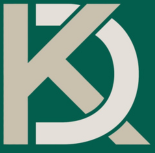Growth and bottlenecks often cycle together. Most entrepreneurs want their businesses to grow, and many want them to grow quickly. Conventional thinking is that fast growth means more success. Truth is, that there are spots in a growth cycle that need to be navigated carefully to make sure your new level is sustainable.
Growth changes a few things; capacity, financials, and time commitment. Anywhere there is a constraint on the business flow, a bottleneck shows up. A bottleneck inside a growth cycle is the place where there is rapid growth requiring one or all of these three things at once. It strains capacity, money, or time, and there is a “squeeze” on operations as the business adjusts to its new size and scale.
Failing to recognize and navigate a bottleneck smoothly can damage your business. And damage your reputation, if you are unable to deliver your products and services to meet customer expectations.
Convoy Road Coffee Roasters is navigating such a squeeze as we continue to grow our customer list, meet the requirements for a Department of Agriculture manufacturer’s license, and get ready for fourth quarter events and holiday gift giving. These events combining together are affecting our operations, and finances. We recognized early the constraints that showed up and the resources required to get to our next level of growth, which is basically $100k/ year.
It’s About Time and Money
First, here are the squeeze spots. The money we are spending bringing our facility up to the requirements for our license is not available for the additional coffee beans our growing customer base is ordering. Our rate of growth is also requiring more and more stock. We must be purchase raw coffee in 65 pound and 135 pound bags. While ordering 130 pounds served us in June, we now need over 200 pounds a month to keep up. Those are current money constraints. Competing financial interests; license and stock, and the need for more stock every month.
Another squeeze spot is on our time. The events we have on the calendar, plus the upcoming holiday gift demands, will require many more hours of roasting and packaging than we have now. Our little roaster used to average about 35-40 pounds a week with a few longer bigger days, now we averaging 75 ish pounds a week with a few longer, bigger days. That’s a big jump. Not only on our time, but we need more bags, labels, and the time it takes to do all of those additional tasks. We may have to hire some part-time help soon. Which of course leads again back to money.
Every decision we make right now is made after considering its effect on our growth plans and how it can help us navigate the current bottleneck. And honestly, I have been a little unsure of myself for the first time in quite a while, having to work hard at not falling back into my default mindset pattern of being afraid of making a mistake. We also know that this won’t last forever and expect it to resolve by the end of October.
Expect Bottlenecks at Every Stage of Growth
Bottlenecks can happen in every business. One place I see it is with people who are scaling their side hustle and leaving their full-time job. Constraints on time before the switch can be challenging and constraints on money in the first few months after the switch are not uncommon. During various stages of growth, you will see them in your own business.
The best way to navigate bottlenecks in your business is to first expect them and then be able to recognize them. I always expect a bottleneck at every stage of growth. They don’t always happen, but I am never surprised if they do. For growth to be sustainable, you have to expand across operations. That requires more investment of time and money, and your new business capacity could require team, equipment, and new operational services.
As for recognizing the bottleneck- look for the constraints before you feel them. We were able to predict the financial squeeze to some degree. We researched the licensing regulations and the expense involved in converting our facility. So, we were able to project the amount of cash we would need, and how much it would affect our operations over what period of time.
Knowing Your Numbers Will Help
It was surprising, however, by the amount of the financial squeeze. This is because I hadn’t expected the amount of customer growth we also had during that time. But we knew our numbers, and we were able to respond quickly. We recognized we were headed for a cash squeeze before it hit. Knowing your numbers is an important part of being able to recognize and respond to the beginnings of a bottleneck in the growth cycle.
Whether you are preparing to scale, or in the middle of a growth spurt, be mindful of the constraints. Watch your time, money, and capacity. Remember that bottlenecks are temporary, and cash is king. These growing pains are a good sign that you are in the right market, with the right audience, and in demand for your products and services. Respond, don’t react, to growth in your business and always keep your eyes on the vision you have been given.
Ready for support with your growth? Join the Success Studio mentorship program.



